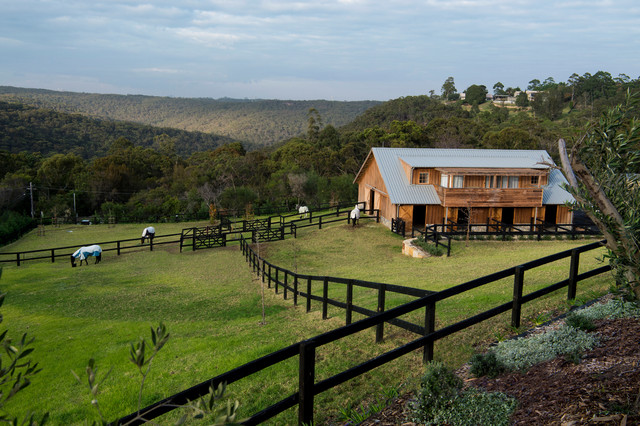Sales are down for farms, as is the median price per hectare, with a number of factors putting pressure on the industry, says REINZ Rural Spokesman Brian Peacocke

Data released by the Real Estate Institute of New Zealand (REINZ) shows there were -126 fewer farm sales (-38.2%) for the three months ended August 2022 than for the three months ended August 2021. Overall, there were 204 farm sales in the three months ended August 2022, compared to 255 farm sales for the three months ended July 2022 (-20%), and 330 farm sales for the three months ended August 2021.
1,545 farms were sold in the year to August 2022 — 278 fewer than were sold in the year to August 2021, with 2.6% more Dairy farms, 25.2% fewer Dairy Support, 21.5% fewer Grazing farms, 13.9% fewer Finishing farms and 17.5% fewer Arable farms sold over the same period.
The median price per hectare for all farms sold in the three months to August 2022 was $25,690 compared to $27,170 recorded for the three months ended August 2021 (-5.4%). The median price per hectare decreased by 6.5% compared to July 2022.
The REINZ All Farm Price Index decreased 8.3% in the three months to August 2022 compared to the three months to July 2022. Compared to the three months ending August 2021 the REINZ All Farm Price Index increased 3.6%. The REINZ All Farm Price Index adjusts for differences in farm size, location, and farming type, unlike the median price per hectare, which does not adjust for these factors.
Two regions recorded an increase in the number of farm sales for the three months ended August 2022 compared to the three months ended August 2021; they were Manawatu-Whanganui and Southland (+2 sales). Waikato (-22 sales) and Bay of Plenty, and Canterbury (-19 sales) recorded the greatest decreases in sales. Compared to the three months ended July 2022, one region recorded an increase in sales, West Coast (+3 sales).
Sales data for the three-month period ending August 2022 reflect a significant reduction in total farm sales compared to the equivalent periods in the previous two years:
- June to August 2020 — 358 sales
- June to August 2021 — 330 sales
- June to August 2022 — 204 sales.
Reasons for such reductions will inevitably be varied but are likely to include an increasing degree of caution mingled with emerging resentment towards central Government, inexorable increases in costs across the board, and widespread volatility in climatic conditions.
Tasman, Nelson, Marlborough, Taranaki and the Far North are at the forefront of those regions most impacted by the turbulent extremes in weather being experienced more frequently across the country.
From a financial perspective, strong levels of income in recent seasons have allowed significant debt reduction across much of the rural sector, albeit erosion of the increased equity due to increases in costs is having a sobering effect across the sector.
Whilst it appears good levels of income are likely to continue in much of the agricultural sector this season, reports of decreasing levels of production from a national perspective combined with the aggressive increases in costs will have a balancing effect, as outlined below:
- current inflation nationally as measured by the Consumer Price Index — 7 .3%
- dairy — mid-point milk price – $9.25 per kg milk solids
- dairy — break-even point — $8.40 (+) per kg milk solids
- dairy — on-farm inflation over last 12 months —5%
- sheep and beef — 20% increase in total earnings nationally in the last 12 months
- sheep and beef — 10% reduction in total volume of product exported
- sheep and beef — on-farm inflation over the last 12 months —2%
- sheep and beef — labour issues causing edible offal to go to rendering rather than adding value
- general expenses — fertiliser — + 30%; feed — + 19%; fuel — a moving target
- general expenses — increases in costs for labour, electricity and interest rates.
Other issues of concern in the rural sector include:
- changes in land use driven by forestry, increasing prices for carbon, urban and lifestyle expansion,
- compliance/environment issues, water regulations, energy generation/solar power
- the future of the bobby-calf industry
- live export of cattle to be banned from 2023.
Points of Interest around New Zealand include:
Northland / Auckland
- good sales of grazing properties throughout Northland, albeit mainly in the lower price range; light activity on finishing properties; no dairy farm sales
- subdued activity in the Auckland region but solid prices paid for individual finishing and grazing properties.
Waikato/King Country/Taupo
- single sales of finishing properties, strong in the Morrinsville district
- steady activity in the Otorohanga district; a rare sale of a piggery at Onewhero
- a good sale of a grazing unit at Te Kuiti
- Waipa and Taupo remained very subdued.
Bay of Plenty/Rotorua
- sales of two smaller avocado orchards in the Western Bay of Plenty
- a well sold dairy unit in the Whakatane region
- no farm sales in the Rotorua district.
Gisborne/Hawkes Bay
- focus on seasonal work so no farm sales in the Gisborne district
- a solid sale of a larger grazing property east of Waipukurau in Central Hawkes Bay
- strong money paid for a finishing unit plus a good sale for a pip-fruit orchard, in separate districts west of Hastings.
Taranaki
- a single dairy farm sale at Opunake plus a boutique dairy farm sale at Stratford
- light activity on grazing properties within the province
Manawatu/Wanganui/Tararua
- uncharacteristically quiet in this widespread region, with a single dairy farm sale in the central district and a smaller finishing unit in the seldom mentioned Horowhenua district
- Tararua remained surprisingly dormant.
Wairarapa/Wellington
- anaesthesia-like tranquillity throughout the southern North Island region.
Nelson/Tasman/Marlborough
- light activity in the horticulture and grazing sectors in the Marlborough district
- very quiet in the flood ravaged Nelson/Tasman region.
Canterbury/West Coast
- most districts contributed credibly across the rural heart of the South Island, with solid dairy and finishing sales in the Waimakariri district
- steady prices paid for dairy and dairy support properties in the Selwyn region
- steady activity on finishing and grazing units in the Hurunui locality, followed by strong values on dairy support blocks handy to Ashburton
- spurred on by their eastern neighbours, a good, strong surge of sales of grazing properties in the West Coast localities of Kiata, Greymouth and Little Wanganui in the Buller district.
Otago
- good, well spread activity with sales of grazing units in the Clyde, Cromwell and Clutha districts
- a steady price for a dairy farm at Clydvale
- a good sale of a larger grazing property at Dansey’s Pass in the Waitaki region.
Southland
- slightly out of puff after strong activity in recent months but nevertheless, steady outcomes achieved for grazing and finishing properties across the Southland district.
Overall:
In August 2022, Finishing farms accounted for 37% of all sales. Grazing farms accounted for 32% of all sales, Horticulture farms accounted for 10% of all sales and Dairy farms accounted for 9% of all sales. These four property types accounted for 88% of all sales during the three months ended August 2022.
Dairy Farms
For the three months ended August 2022, the median sales price per hectare for dairy farms was $36,325 (18 properties), compared to $39,290 (23 properties) for the three months ended July 2022, and $41,910 (30 properties) for the three months ended August 2021. The median price per hectare for dairy farms has decreased 13.3% over the past 12 months. The median dairy farm size for the three months ended August 2022 was 99 hectares.
On a price per kilo of milk solids basis, the median sales price was $35.94 per kg of milk solids for the three months ended August 2022, compared to $36.94 per kg of milk solids for the three months ended July 2022 (-2.7%), and $40.93 per kg of milk solids for the three months ended August 2021 (-12.2%).
The REINZ Dairy Farm Price Index increased 10.1% in the three months to August 2022 compared to the three months to July 2022. Compared to August 2021, the REINZ Dairy Farm Price Index increased 4.8%. The REINZ Dairy Farm Price Index adjusts for differences in farm size and location compared to the median price per hectare, which does not adjust for these factors.
Finishing Farms
For the three months ended August 2022, the median sale price per hectare for finishing farms was $37,180 (75 properties), compared to $35,320 (101 properties) for the three months ended July 2022, and $31,010 (103 properties) for the three months ended August 2021. The median price per hectare for finishing farms has increased 19.9% over the past 12 months. The median finishing farm size for the three months ended August 2022 was 39 hectares.
Grazing Farms
For the three months ended August 2022, the median sales price per hectare for grazing farms was $13,600 (65 properties), compared to $13,430 (72 properties) for the three months ended July 2022 and $11,610 (96 properties) for the three months ended August 2021. The median price per hectare for grazing farms has increased 17.1% over the past 12 months. The median grazing farm size for the three months ended August 2022 was 147 hectares.
Horticulture Farms
For the three months ended August 2022, the median sales price per hectare for horticulture farms was $402,630 (21 properties), compared to $411,490 (24 properties) for the three months ended July 2022 and $291,640 (46 properties) for the three months ended August 2021. The median price per hectare for horticulture farms has increased 38.1% over the past 12 months. The median horticulture farm size for the three months ended August 2022 was 7 hectares.












